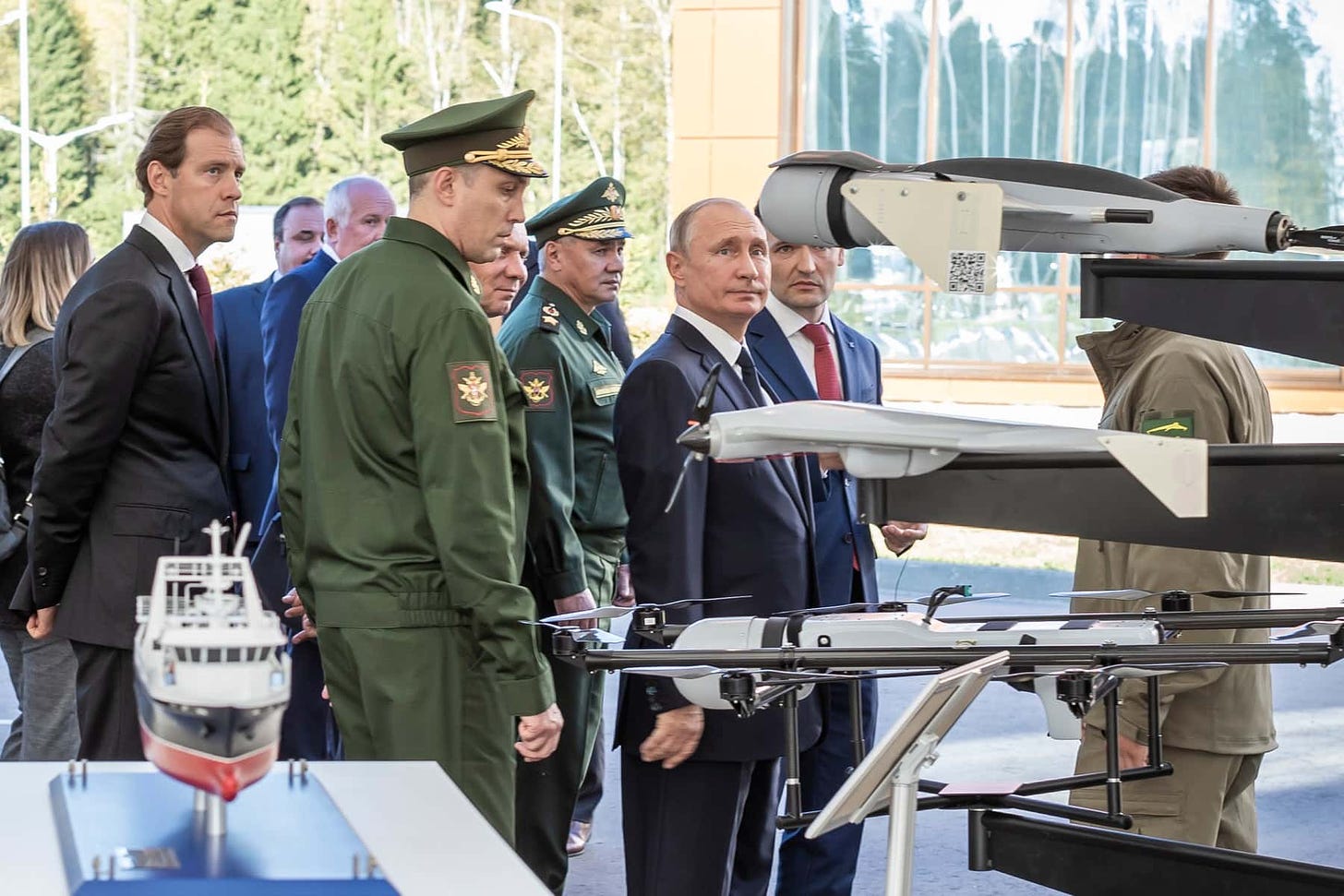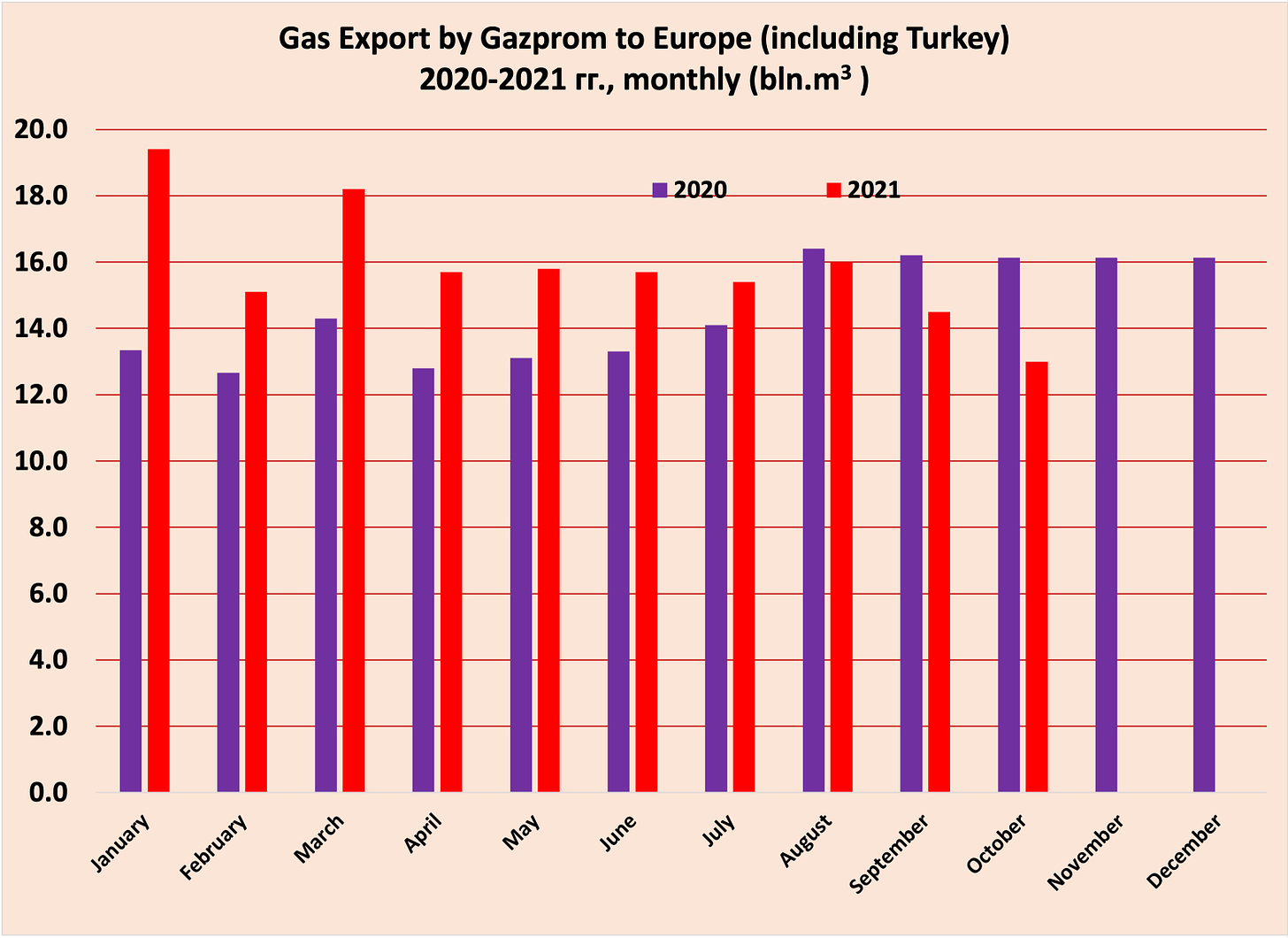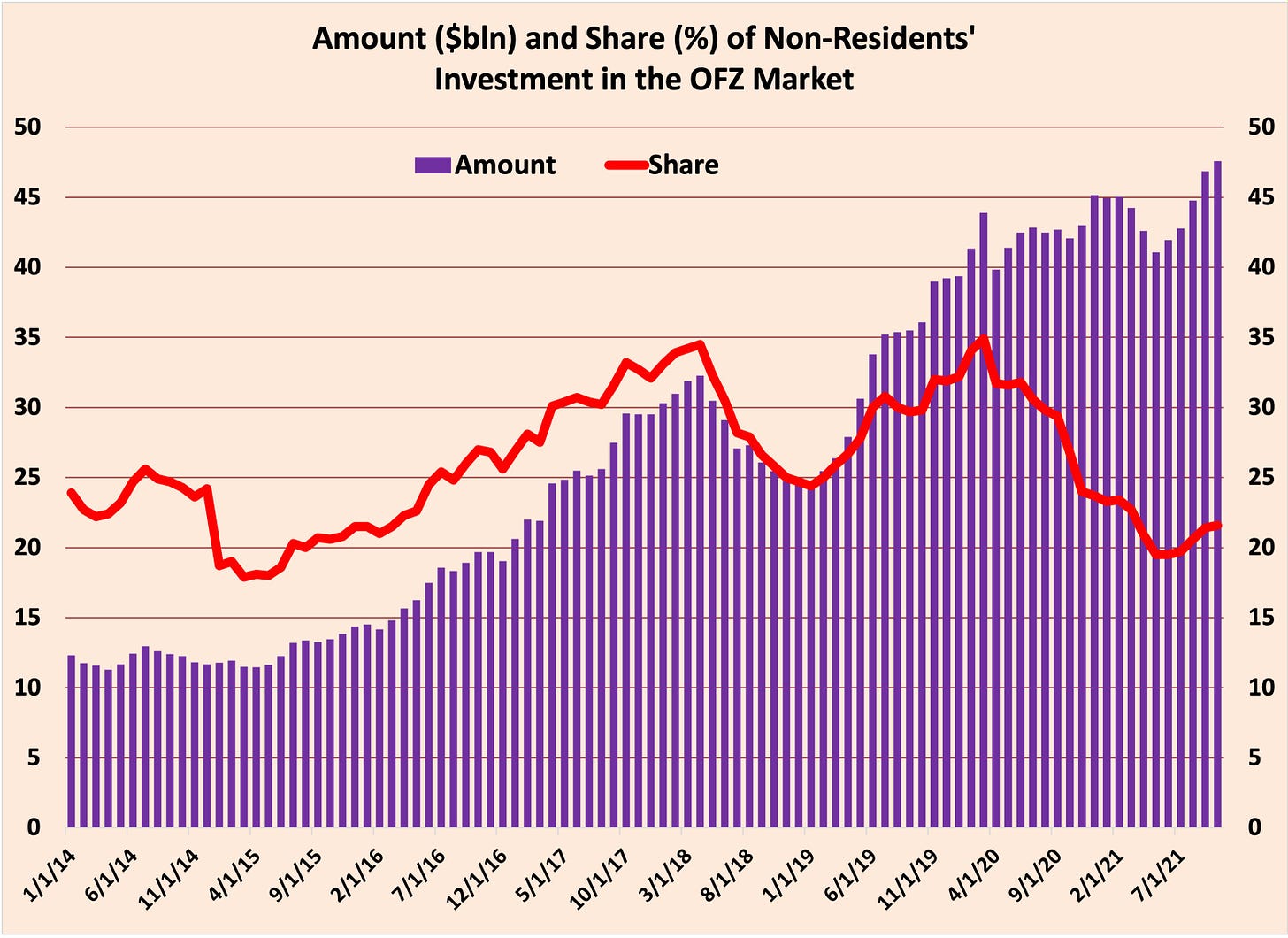Putin looks for a future war. More gas less export. Ukraine is in trouble. Moscow needs the U.S. visas
November 3, 2021
Generals are always preparing for the last war
The second meeting of Vladimir Putin with the leadership of the Ministry of Defense and the leaders of the military-industrial complex turned out to be devoted to a very narrow topic—the use of drones. The summer war in Nagorno-Karabakh may cause such a schedule. It demonstrated how much the nature of the modern military conflict has changed. One of the decisive factors for Azerbaijan’s success was the active use of drones, in the fight against which the Russian air defence systems in service with Armenia turned out to be helpless.
For a long time, the leadership of the Russian Ministry of Defense and the primary Russian arms manufacturer, the Rostec corporation, were very frivolous about this type of weapon, preferring military aircraft. I can explain these positions.
On the one hand, generals are always preparing for the last war, and Russian generals, in this sense, are no exception. Russia won easy victories using traditional weapons in the conflicts with Georgia (2008) and Ukraine (2014-2015) against virtually incapacitated enemies. But these victories strengthened the belief of the Russian generals that the rearmament strategy they have chosen, which provides for the preservation of traditional types of weapons, is the only correct one. One should not forget that the protection of conventional aviation allows the army to maintain a considerable number of related “jobs,” which colonels and generals occupy.
On the other hand, making a combat aircraft is a much more cost-effective project for weapons manufacturers. Not only because the aircraft cost is dozens of times more expensive—the Russian authorities severely limit the profits of defence companies—but also because colossal budget subsidies can be received for the development and production, the spending of which is almost impossible to control.
The crushing victory of Azerbaijan in Nagorno-Karabakh made a deep impression on Vladimir Putin, who decided to prepare his army for a future war. There will be a war in which there will be a limited place for the traditional types of weapons to which Russian generals are accustomed. But such an army of the future may not appear soon—the cavalry as part of the Soviet Army remained until 1955.
Putin’s dream wanes
The head of the Federal Service for Military-Technical Cooperation of the Russian Government, Dmitry Shugaev, has announced the suspension of the Russian-Indian project to create a fifth-generation fighter (FGFA). “The Indian side suspended participation in the program until the adoption of the Su-57 by our Armed Forces. This is a fact.”
The FGFA program started in 2007 when Sukhoi and Hindustan Aeronautics signed an agreement on the joint development of a fifth-generation fighter based on the Su-57. As part of the first phase of the $295 million programs, the design of the Indian fighter was developed.
In April 2018, Janes Defense Weekly reported that India was withdrawing from the FGFA project. The Indian side notified Russia of this, pointing out the compelling discrepancies in technological and financial issues. The Indian military believes that the Russian side does not meet the stated requirements for secrecy. Also, the Indian side believes that Russian-developed combat avionics, radars, and sensors do not meet the standards of a fifth-generation aircraft.
Until recently, the Russian authorities refused the existence of disagreements between the parties in implementing the FGFA project.
Shugaev said that the portfolio of export orders for various Russian weapons systems exceeds $52 billion. This makes it possible to count on stable export volumes in the next 3-5 years, which will amount to about $15 billion a year. He also said about the absence of any influence of Western sanctions on the export of weapons from Russia: “We do not observe any trend due to the sanctions to narrow the geography of supplies.”
The development of Russian aviation is one of the priority projects of President Putin. The federal budget spent tens of billions of dollars of budgetary funds on its implementation. The task set by Putin sounds ambitious: Russia must enter the world market not only for the military but also for civil aviation as a leading player. Russia tried to organize cooperation with Italy and France to produce and maintain a narrow-body Sukhoi Superjet aircraft, with China in the design and production of a wide-body medium-range aircraft, and with India in the design and production of a wide-body medium-range aircraft, a fifth-generation fighter. None of these projects has been successful.
More gas less export
The Ministry of Energy of Russia has published operational data on energy raw materials production for ten months of this year. Thus, gas production increased by 11.1%, oil by 0.9%, coal by 9.9%, compared to the same period last year.
In October, gas production increased by 4.6% compared to September and 22% compared to August, while Gazprom’s export to Europe declined by 17.5% compared to the average April-August 2021 level.
The Central bank and inflation destabilized market
The Ministry of Finance of Russia cancelled the auctions for the placement of government bonds scheduled for November 3 to help stabilize the market situation.
The decline in prices in the ruble-denominated government debt market began on October 22. That day, the Bank of Russia sharply raised the key rate immediately by 75 basis points (up to 7.5% per annum). This turned out to be significantly higher than the expectations of most analysts. In addition, the Chairman of the Bank of Russia gave direct signals about a possible further tightening of monetary policy. The publication of the latest data on inflation in Russia speaks of growing inflationary expectations of the population, which makes the upcoming increase in the rate of the Bank of Russia almost inevitable. In this situation, holders of government bonds began to consider the higher level of the Central Bank’s key rate for the medium term.
According to VTB Capital estimates, non-residents withdrew 64 billion rubles from the Russian ruble-denominated government securities (OFZ) market ($900 million) over the past week. This was the most significant outflow of non-resident funds since April of this year.
I am far from thinking that what happened is a severe problem for the Russian Ministry of Finance. On the one hand, the fiscal reserves of the Russian budget exceed 14 trillion rubles ($ 196 billion, or 12% of GDP, or 56% of the 2022 budget expenditures) and make it possible to dampen any fluctuations in the market. On the other hand, the dependence of the Ministry of Finance on the money of non-residents when issuing new bonds fell sharply. In the spring of 2014, in the spring of 2017, and during 2019, non-residents bought more than 100% of the new issuance volume. During the pandemic, the government entered into an informal agreement with the largest state-controlled banks, which sharply increased their investment in government bonds. Although non-residents have increased their investments in OFZs by 20% in dollar terms since April 2020, their market share has decreased from 30% to 20%. Their share in new issuances declined to 7.5%.
Ukraine is short of power
The energy crisis in Ukraine has begun. Today Ukraine applied for urgent supplies of electricity to Slovakia and Belarus. The reason was the lack of capacity of thermal power plants due to a lack of coal, primarily from energy companies controlled by the state. Although the Ukrainian power system overcame this failure almost entirely after three hours, the episode demonstrates how volatile the Ukrainian power industry is.
Moscow blames the U.S. for refusing to issue visas
Russian Deputy Foreign Minister Sergei Ryabkov called the U.S. to increase the number of staff at the embassy in Moscow to normalize the Consulate’s work. He believes that nothing prevents the United States from filling its quota of 455 diplomatic personnel in Russia. “The American diplomatic presence in Russia has now been reduced to such a low level that (the embassy) can no longer offer essential consular services such as issuing visas for Russian citizens who need to travel to the United States. Now the United States requires our citizens to travel abroad to obtain a visa,” he said, speaking in Moscow. According to Ryabkov, Moscow considers such a situation unacceptable.
In April of this year, Vladimir Putin banned the American Embassy in Russia from hiring Russian citizens, who made up the bulk of the Consulate’s visa workers. Since May, the American embassy has completely stopped issuing visas to Russians.
Is Zimbabwe going to space?
Roscosmos and the Zimbabwe National Geospatial and Space Agency (ZINGSA) signed a memorandum of understanding and cooperation on space. The parties discussed interaction in the remote sensing of the Earth and personnel training for the space industry.
I do not believe Zimbabwean cosmonauts will go to space soon. But I think the head of Roscosmos, Dmitry Rogozin, really needs this agreement to go hunting in this country.






